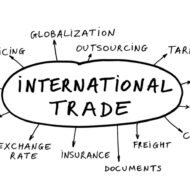Posted by Managementguru in Business Management, International Business, Marketing, Principles of Management
on Mar 11th, 2014 | 0 comments

Key Strategies of Global Marketing Globalization means many things to many people. For some it is a new paradigm – a set of fresh beliefs, working methods and economic, political and socio-cultural realities in which the previous assumptions are no longer valid. For developing countries, it means integration with the world economy. It can be better understood if we look it at this perspective- “the world integrated into one huge market”. It calls for the removal of all trade barriers among countries and a perfect competitive market prevails and the stress can lead to many positive and possible outcomes in terms of QualityQuantityUniquenessForeign exchangeBenefits to the host countryIncreased productivity leading toEconomic growth Well, it does not end there. An MNC (multi national company), by operating in more than one country gains r and d, production, marketing and financial advantages in terms ofcost and labor that other competitors may not enjoy. The global company views the world as one market, minimize the importance of national boundaries, sources, and raise capital and markets wherever it can do the job best. Why do companies go global? One reason could be the rapid shrinking of time and distance across the globe thanks to faster communication, speedier transportation, growing financial flows and rapid technological changes. It is being realized that the domestic markets are no longer adequate and rich. Japanese have flooded the U. S. Market with automobiles and electronic goods because the home market was not big enough to absorb whatever was produced. Companies at the first stage of globalization have only passive dealings with foreign individuals and organizations. By the second stage, companies deal directly with their overseas counterparts, though they might continue to use third parties also. The company might decide to set up an import or export department. Next comes the shedding of domestic capacity and floating an international organization and have a direct hand in exporting, importing, and perhaps producing goods and services abroad. Seldom companies reach this stage, even if they do, they recede later. The company can have a strong foothold in the countries it is organizing its activity only by way of * Superior product quality* Demand* Customer preference for that particular product range that the company offer* A dynamic CEO projecting and boosting company’s image,* Brand image* Availability of skilled labor* Licenses* Access to necessary infrastructure* Feasible financial structure* Viability in the long run* Marketing mix Chennai in India has become a hub for so many corporate as well as global companies since the business climate is very favorable and enterprising. Some of the strategies in globalization would be * Deciding whether to go global* Deciding which markets to enter* Deciding how to enter the market* Learning to handle differences* Adjusting the managing process* Deciding organization structure* Selecting a managerial approach. Developing countries like India have adopted new economic policies that are expected to encourage the international companies setting their foot in India, by which it compels many Indian companies to pursue internationalization vigorously. True globalization marks the beginning of a new economic era of growth and...

Posted by Managementguru in Economics, Financial Management, International Business, Marketing, Project Management
on Mar 11th, 2014 | 0 comments

What is Trade? Trade is the exchange of commodity and services. International trade represents business transactions taking place at the global level, and it is fundamentally different from domestic trade. Trade at international level demands huge investments, network of franchisees and proficient people to run the show. Many corporate giants are trying to capture Asian markets, especially Indian market, which has become the industrial hub for such economic activities. Economic liberalization has been the focus of many developing countries for the past two decades and this has allowed multinational companies with huge investment potential to enrich the weaker economies. What is International Trade? International trade tries to generate more foreign exchange, which is always good for the economy. Say, if a country has rich resources of petroleum, naturally it will try to sell the surplus to countries not endowed with such natural resources. That is why Middle East nations are prosperous and economically independent. The diversity in productive possibilities in different countries is due to the presence of limited natural resources. When a country gets a head start in a particular product, it can become the high volume, low cost producer. The economies of scale give it a significant advantage over other countries, which find it cheaper to buy from the leading producers than to manufacture the product themselves. Barriers for Effective Trade Every nation must try to specialize in the production and export of those commodities, which are available in plenty and must import such products in the production of which they have a resource deficiency. It should be remembered that there are severe man made barriers in international trade such as, export duties, quotas, exchange restrictions etc.,that hinder the free movement of products. International Trade and Finance Nevertheless, it is not also possible for a country to produce domestically every kind of product. In spite of all these restraining factors, global trade is thriving, thanks to the advanced technological aspects introduced in communication and faster means of transportation. Distance is no more a constraint and the world has become one small global village. Foreign Exchange Issues All domestic transactions, say in a country like India take place in rupees, which is the legal tender in the country. However, in its trade with other countries like USA, Germany, Japan, France and Britain, the payments have to be made in terms of dollars, marks, yens, francs and pound sterling respectively. The mechanism through which payments are effected between two countries having different currency systems is called foreign exchange. It may be also defined as the exchange of money or credit in one country for money or credit in another. Foreign exchange rates can affect relative prices and net exports. A rise in the a nation’s foreign exchange will depress that nation’s net exports and output, while a fall in the foreign exchange rate will increase net exports and output. Because of the significant impact of exchange rates on national economies, countries have entered into agreements on international monetary...

Posted by Managementguru in Economics
on Feb 16th, 2014 | 0 comments

Monetary and Fiscal Policy Countries worldwide are concerned about the following issues while setting up monetary and fiscal policies; namely, the appropriate level of aggregate demand and the best blend of monetary and fiscal mix. Monetary policy focuses on the movement of money within the country, the inflow of foreign exchange and varying interest rates fixed by the Reserve Bank. Fiscal policies are concerned about stabilizing the economy and handle public revenue, expenditure and debts. The pattern of resource allocation and distribution of income affect the drafting of fiscal policies. Monetary policy is very well restricted by the government’s decision on public expenditure and taxation. The tactical combination of both will help determine the composition of GDP. The purpose of monetary policy: The purpose of monetary policy is to ensure availability of credit to the productive sectors of the economy and also regulation of money supply. Econometric models, which use statistical techniques to assess the impact of monetary policy changes on the macro economy, usually find that changes in money supply have a major impact on production in the short term, with greater impact on the proportion of nominal GDP in terms of wage and price inertia as time progresses. Annual budgets are always a nightmare for the common people as tax imposed on commodities has a say on their disposable income. For example, if the price of crude oil is on the rise, the government can do nothing but to increase the fuel prices. Inflation leads to an increase in interest rates charged by banks nationalized or private, affecting small-and medium-scale business firms. Some terminologies related to monetary policy: Let us get ourselves familiar with some of the terminologies in connection with monetary policy. This may help you to understand the subject in a better way. Repo rate: Rate at which RBI lends to other banks against securities Reverse Repo Rate: Rate at which RBI borrows from other banks Cash Reserve Ratio (CRR): Amount of money to be set aside by the banks with RBI against their deposits Statutory Liquidity Ratio (SLR): Percentage of bank funds to be maintained in government securities Capital Adequacy Ratio: Capacity of banks to work within the time line and risks. Bank Rate: Minimum interest rate at which the Central Bank offers commercial loans to other banks Inflation: Steady rise in prices of commodities Money Supply: Sum total of money circulating in the economy Money flow, policy variables and liquidity conditions have a direct bearing on savings, investment, consumption, inflation, employment and GDP.The ability of a country to improve its standard of living over time depends almost entirely on its ability to improve technology and capital used by the workforce. In short, the budget deficit should be reduced, which guarantees the rate of national savings and increased purchasing power parity (PPP). Main objectives of monetary policy: There have been changes in the objectives of monetary policy from time to time and vary from country to country. Sometimes the monetary policy adopted by a country may have different objectives, which are contradictory. In such cases, the country may have to compromise by setting the priorities. Some of the main objectives of monetary policy: • Price stability • Exchange rate stability • Full employment • High rate of economic growth • Equitable distribution of income Main objectives of Fiscal Policy: Post the Great Depression of the 1930s, it was well realized that governments should actively participate in economic activities to achieve economic growth and equity, through sound fiscal policies. The purpose of fiscal policy lies in: • Achieving full employment • The maintenance of stability • Increasing the rate of capital formation • Development of a model of...






